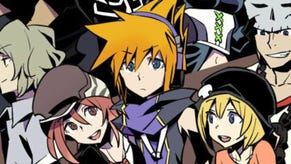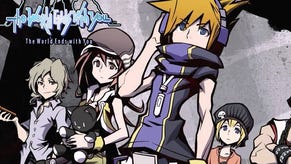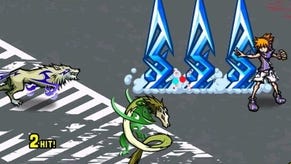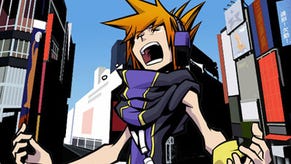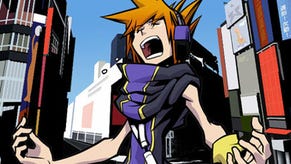The World Ends With You
Teenage clicks.
I'll be the first to admit that games reviewers can easily become jaded, brave martyrs that we are. Playing so many games does mean that the uninspired offerings need to work harder to make an impression, while games that innovate become glittering gems to be treasured. And, sometimes, the elements that jump out of the mire aren't always the first priority of the everyday gamer. The end result is that any game that arrives on the crest of a hyperbolic wave, festooned with praise for its fancy new ideas, can make you - the common peasants who have to pay for your games - suspicious of anything heralded for its fresh thinking.
The World Ends With You could certainly fall into that trap. Released last summer in Japan as Subarashiki Kono Sekai (or "It's A Wonderful World"), it's since been praised to the high heavens for the way it reinvents the RPG, making use of the DS and its unique properties in ways that make even the most hardened hack sit up and pay attention.
Of course, I'm using RPG as a sort of catch-all description, since the game flits between genres like a hummingbird, slurping up delicious nectar from fighting games, adventure games, even social management games like The Sims. Such eclecticism alone would be impressive, yet what makes The World Ends With You so surprising - and often so oblique - is that almost every element of the game is delivered in a way you've not seen before, and then proceeds to offer even more depth beyond those daunting first impressions. It's a dizzying experience.
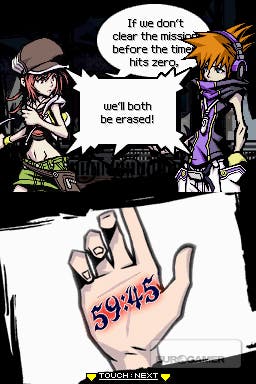
There are some familiar genre touchstones though and our lead character, Neku, is one of them. Like all good RPG heroes, he's fifteen, moody and afflicted with convenient amnesia. At the start of the game he passes out and wakes up in Tokyo's achingly hip Shibuya district. Nobody can see him, and he's somehow obtained a black pin (or badge, as we'd call it) that allows him to read people's thoughts.
Then he receives a cryptic text message - "Reach 104. You have 60 minutes. Fail, and face erasure." Clearly it's not referring to the camp pop duo. Neku has somehow found his way into the Reapers Game, in which disaffected youths must survive seven days of trials and challenges set by the hooded Reapers. Paired up with Shiki, a bubbly young lass, Neku is thrown into a world dictated by complex rules, cryptic puzzles and frequent combat, and you're coming along for the ride.
It's the combat that dominates the game, and the Stride Cross Battle System is also where much of the hype is coming from, so let's start there. The gameworld is populated by creatures known as Noise - weird animalistic manifestations of our urban malaise. Neku can see them as floating shapes when he activates his black pin, and clicking on them initiates an encounter. The gameplay then splits into two, with Neku fighting on the touch-screen using the stylus while his partner battles on the top screen, controlled with the d-pad or face buttons. Both characters are separate but battling the same foes and sharing the same health gauge.

